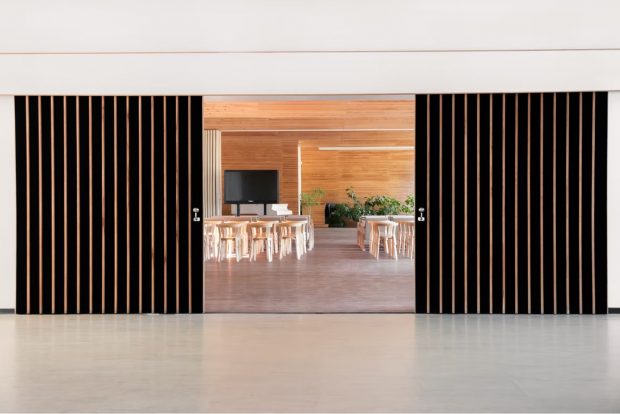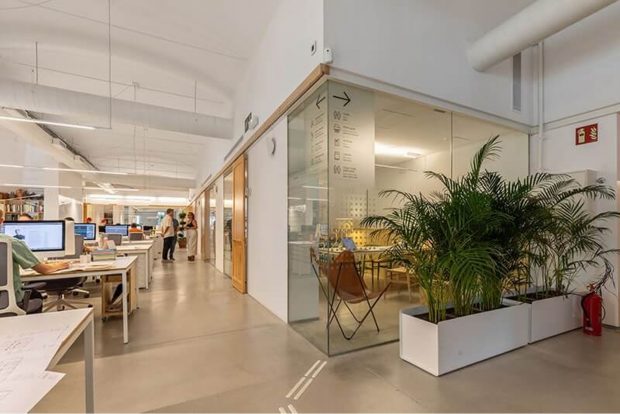Selecting The Right Door For Your Office
Selecting the right door can be one of the most crucial decisions a designer has to make when considering how to optimize the flow of a space. The wrong choice of door can be an unwelcome barrier, and can have a negative impact on the social dynamic- cue the cubicle hellscapes of the ‘90s! Conversely, the right choice of door can provide the ideal balance of visual connection to colleagues, and privacy for when you need to focus, while allowing for great views to help the inspiration flow. Beyond aesthetic and function the right door can even encourage more creative use of the office space (spontaneous office party, anyone?).


PRIVACY
Being able to focus on work without distractions is one of the key incentives for employees to return to the office post-covid. Equally, with the boom of working from home, homeowners are looking to optimise their existing space to become more work-friendly. Doors are an important tool that allow for visual separation of spaces as well as blocking out noise, and nowadays there’s a wide variety of materials to choose from. A closed door can help signal to coworkers or noisy children when you’re in focus mode, while sliding doors can be used to create breakout spaces and nooks for undisturbed video calls. Choosing silent doors in areas that require frequent closing can also be a crucial detail that makes or breaks concentration of coworkers. Visually and auditorily separating workspaces from areas of high traffic, or shared spaces, with textured dividers and booths allows workers to cut off distractions and ‘get in the zone’ more easily while still allowing for collaboration and social exchange.
VISUAL CONNECTION


Exclusively using digital technology in a work environment means that much nonverbal communication- which makes up a staggering 70-97% of all communication- is completely lost. Creative design solutions for office environments allow for visual connection with coworkers while still ensuring privacy. Eye contact, body position and tension enrich the working environment and help smooth out working relationships.
Glass doors are the perfect way to retain visual communication (which particularly helps to accommodate hearing impaired staff), as well as simply providing the reassurance of other people’s presence. Frosted glass allows for privacy but indicates that a room is occupied, which is ideal for medical or legal settings. Partially frosted or partitioned doors are ideal for meeting rooms where presentations are held- while coworkers are sitting down, the focus remains in the room, whereas standing up allows for expanded communication to the wider space. And of course, never underestimate the importance of a visual connection with nature and our non-human coworkers, which is proven to boost wellbeing, encourage creativity and help to create a calmer mental state.
OPTIMISING USE OF SPACE WITH SLIDING DOORS
One of the challenges office managers and home workers face post-covid is how to best modify existing spaces for the demands of new working methods. Awkward dimensions or small spaces can limit possibilities if only traditional doors are considered. Creative use of doors can open up a world of possibilities to reinvent the office. Modern sliding doors help reduce floor area taken up by a door, and they come in all possible shapes, sizes and materials. Lightweight or solid automatic doors can optimise hands-free navigation of the space or sliding doors with air gaps can improve air circulation in offices. Pocket doors are suited for homes and can be customised to fit with existing doors. Customisable dividers and corner bi-fold doors can transform even small spaces to create entire impromptu rooms.
Considering the purpose of your office, there are many creative ways to use doors to make old and awkward spaces workable for you. If you’re not sure how, experienced door manufacturers like Klein offer consultation services to help find a creative solution to suit your space. They can help you find the right doors so you can collaborate with your team (even if your team consists of your living partner and pets) while still being able to retreat to a quiet, reflective space for focus.
